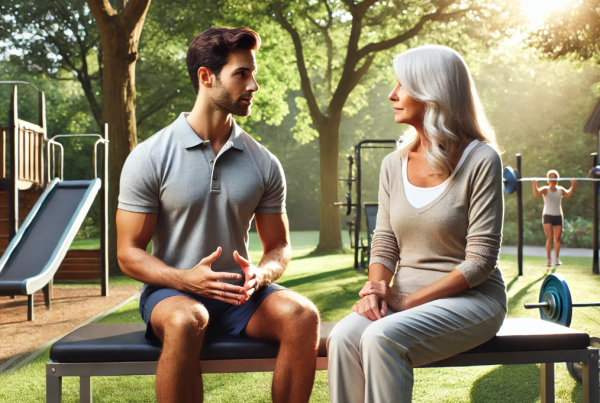Ask any health care provider about patient centred care, and they will say, “Yes, of course we provide patient centered care!”
The phrase ‘patient centred care’ or ‘client centred care’ has become somewhat of a buzz-word in recent years, the meaning almost becoming synonymous with ‘wanting what is best’ for patients, or trying to be a ‘good’ practitioner.
But what does it mean to offer a truly patient-centred rehab program? And how do we, as exercise physiologists, know if we are doing it right?
The Theory of Patient Centred Care
‘Person centred care’ was initially introduced by psychologist Carl Rogers in the 1960’s. As the health care system shifted from the medical model (i.e. health is determined by the absence of sickness) to the bio-psycho-social model (health is a complex combination of physical, psychological and social determinants), so did the focus on the person receiving the health care. Patient centred care was further popularised in 2001, when the Institute of Medicine proposed that ‘patient centeredness’’ be included as one of the six goals for health care quality (1).
Patient-centred care can be defined as “providing care that is respectful of and responsive to individual patient preferences, needs, and values and ensuring that patient values guide all clinical decisions.” (Institute of Medicine) (2)
If we break down ‘patient centeredness’’, it can be summarised as…(3, 4)
-
- Empowering patients to be active participants in their health care,
- Clear communication and knowledge sharing,
- Allowing them to be involved in decision making regarding their health / wellbeing,
- Respecting people’s preferences and values, even if they differ from our own,
- Being empathetic, providing care to individuals on their terms
What this Means in Practise
For us exercise physiologists, we are big on supporting people to become active participants in their health. We want our patients to have the skills and knowledge that they need to exercise well, eat well, sleep well, and make proactive decisions for themselves. Of course, to gain this independence, they need the right information!
Providing information is just the start. A true patient centred approach lets them then take this knowledge and work with it in a way that fits with their personal values. They need to be able to ask questions and process that information in the context of their own life. Exercise preference is such a personal thing – and unless that exercise is meaningful (and hopefully enjoyable!) to them, there’s little chance that they will stay motivated to continue with it. It may mean that we do our sessions at their home, or at a local park, instead of at a gym. Flexibility is key! Providing them with options is important as it allows them to be involved in the design of their rehab program – we can only expect that this will improve their engagement too!
The PSFS (patient specific function scale) is a great way for us to check in on what is important to them before designing their program. We ask them, “what is something that you used to be able to do (pre injury / illness) that you currently can’t, but would like to return to?” Our program often includes elements of this same task, helping them to work towards their personal goals.
So, what is patient centred care? Ask yourself this – If you put yourself in the shoes of that person receiving the care, what would we want from those providing care to us? Respect, empathy, clear information, and the ability to make decisions for ourselves. It’s exactly what patient centred is all about!
References:
- https://www.health.org.uk/sites/default/files/PersonCentredCareMadeSimple_0.pdf
- https://www.healthnavigator.org.nz/clinicians/p/patient-centred-care/
- Epstein RM, Street RL Jr. The values and value of patient-centred care. Ann Fam Med. 2011 Mar-Apr;9(2):100-3. doi: 10.1370/afm.1239. PMID: 21403134; PMCID: PMC3056855.
- Reynolds A. (2009). Patient-centred Care. Radiologic technology, 81(2), 133–147.
Author: Yolanda van Vugt Editor: Tessa Nielsen Clinical Exercise Physiologist and Content Creator at Specialised
#exercisephysiology #exerciserehab #rehabilitation #lifeinsurance #incomeprotection #ctp #workcover #mobile #mobileexercisephysiology #fatigue #mentalhealth #cancer #musculoskeletal #injury #pain #physio #physiotherapy #Sydney #Brisbane #Melbourne #Adelaide #Auckland #Waikato #BayofPlenty #Wellington #Otago #Christchurch



